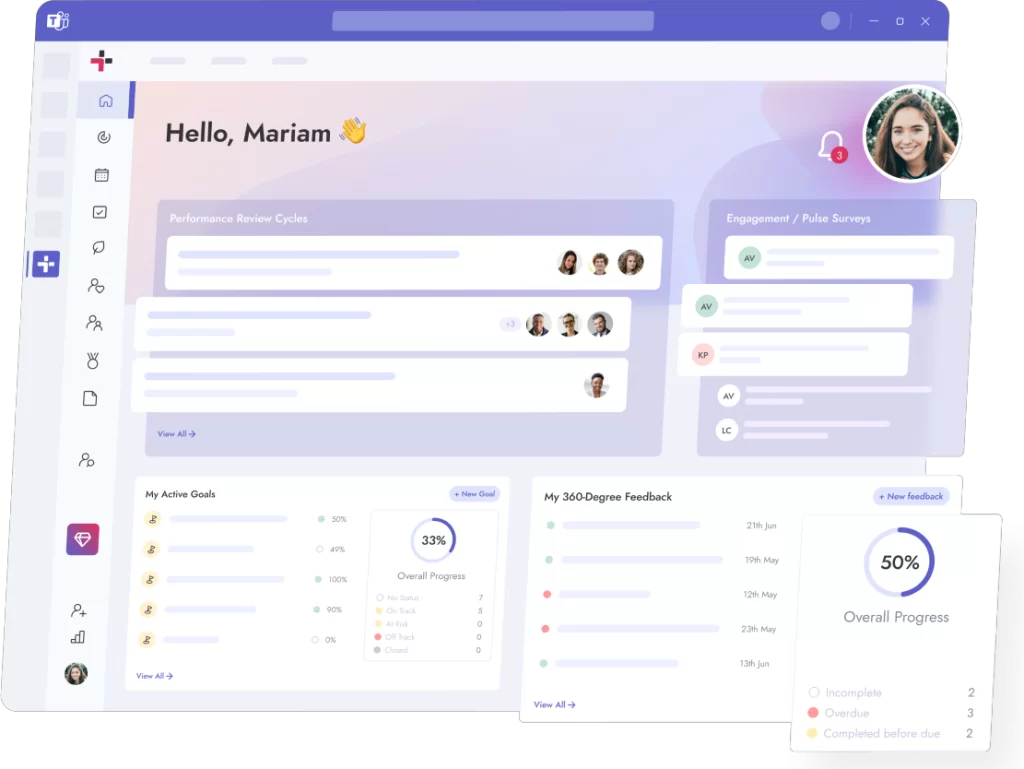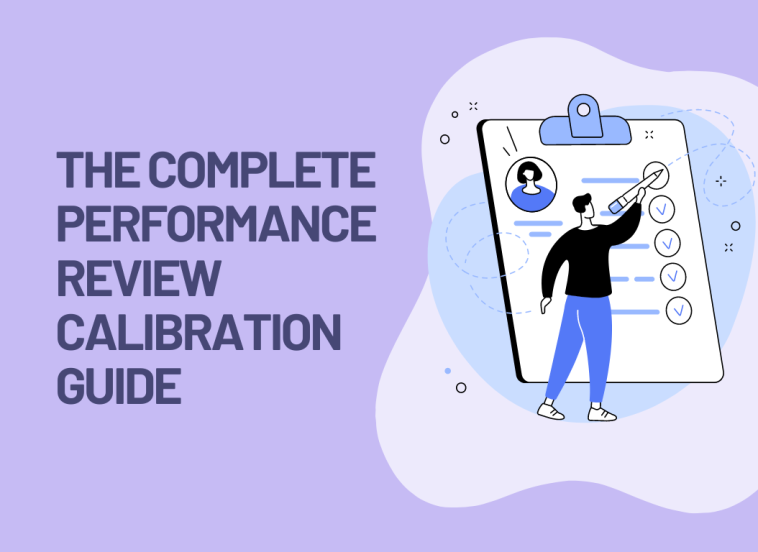Performance review calibration is a topic central to the discussion of performance evaluations. Objectivity in grading criteria is an issue that has haunted performance appraisals since their inception. Evaluating performance is an incredibly nuanced undertaking and every step of the way, there are some rather treacherous pitfalls to avoid.
What if two people in different departments hold their employees up to completely separate standards? What if this discrepancy in standards affects the bonuses employees receive at the end of a review period? Can reviewers avoid unintentional review biases?
These are all perfectly reasonable questions surrounding the discussion of performance reviews. The answer to all of those questions and the issues they imply?
Performance review calibration! That is why in this article we will not only give you the definition of performance review calibration but also best practices on how you can calibrate your performance reviews, as well as how you can avoid running into those issues in the first place!
Performance Review Calibration 101
Before the “How?” and “Why?” of performance review calibration, let’s answer the “What?” first. What is performance review calibration? To give you a simple definition: Performance review calibration is the process of standardizing the evaluation of employee performance across different departments or teams within an organization.
The process of calibrating your reviews includes a group of managers and leaders who review and discuss the performance ratings given by individual supervisors to ensure that they align with the organization’s standards and expectations.
Let’s understand the need for performance review calibration and the purpose it serves through a short case.
Performance Review Calibration Example: TechFlow Inc
Background: Imagine a medium-sized technology company, TechFlow Inc., which has recently experienced rapid growth. The company has several departments, including Software Development, Sales, Marketing, and Customer Support. Each department is managed by different team leads and managers who are responsible for conducting performance reviews of their team members.
Situation: During the annual performance review cycle, it was observed that the ratings and feedback varied significantly across departments. For instance:
- The Sales department, managed by John, had a notably higher proportion of employees receiving top ratings compared to other departments.
- In contrast, Lisa, who manages the Customer Support team, had given relatively conservative ratings, with very few high performers.
- Feedback from the Marketing department, managed by Alex, showed a mixed bag of ratings with no clear alignment to specific performance criteria.
Resulting Issues: This inconsistency in ratings led to several issues:
- Morale and Equity Concerns: Employees from the Customer Support team felt demotivated and perceived a lack of recognition for their hard work, especially when compared to their peers in Sales.
- Questionable Promotion and Compensation Decisions: The disparity in ratings influenced decisions related to promotions and bonuses, with the Sales team seemingly benefiting unjustly.
- Trust in the Performance Review Process: The lack of consistency led to a growing distrust in the performance review process. Employees began to feel that evaluations were more reflective of the manager’s personal bias than their actual performance.
The Need for Calibration: This particular performance review example clearly demonstrates the need for performance review calibration in TechFlow Inc. By implementing a calibration process, the company could:
- Standardize Performance Criteria: Ensure that all departments evaluate performance based on uniform criteria aligned with the company’s overall objectives.
- Identify and Address Biases: Calibration meetings would allow for discussions where biases like leniency or severity in ratings could be identified and addressed.
- Promote Fairness and Transparency: Through calibration, employees across all departments would be assured that their performance is evaluated fairly, based on agreed standards, thereby improving trust in the process.
Performance review calibration is essential in this scenario to align the company’s performance evaluations, ensuring fairness, consistency, and transparency across all departments. It helps in maintaining employee morale and trust in the system while supporting more objective and strategic HR decisions.
How To Calibrate Performance Reviews?
Now that we’ve covered the “What?” and the “Why?”, the time has come to cover the “How?”. A well-executed performance review calibration process should include several key components to ensure its effectiveness. We’ve highlighted the most important components below, as well as how you can utilize them and calibrate your performance reviews.
1. Gather Comprehensive Performance Data
Calibration should involve a thorough review of diverse performance data. When we mean comprehensive data, it is not just numerical ratings or scores, but also qualitative feedback, self-assessments, peer reviews, and any other relevant performance indicators.
The best way to make sure you have access to this data when it comes time to conduct your performance reviews is to track them using a complete performance management platform.
We’ve highlighted some of the best performance management systems you can find in a list: Top Performance Management Software.
That being said if your organization is using Microsoft Teams or Outlook on a daily basis, then the best option for you would be: Teamflect.

Teamflect users can not only set and track goals, exchange feedback, and manage performance throughout the year, but also integrate all of that data into their performance reviews for a completely objective review process!



